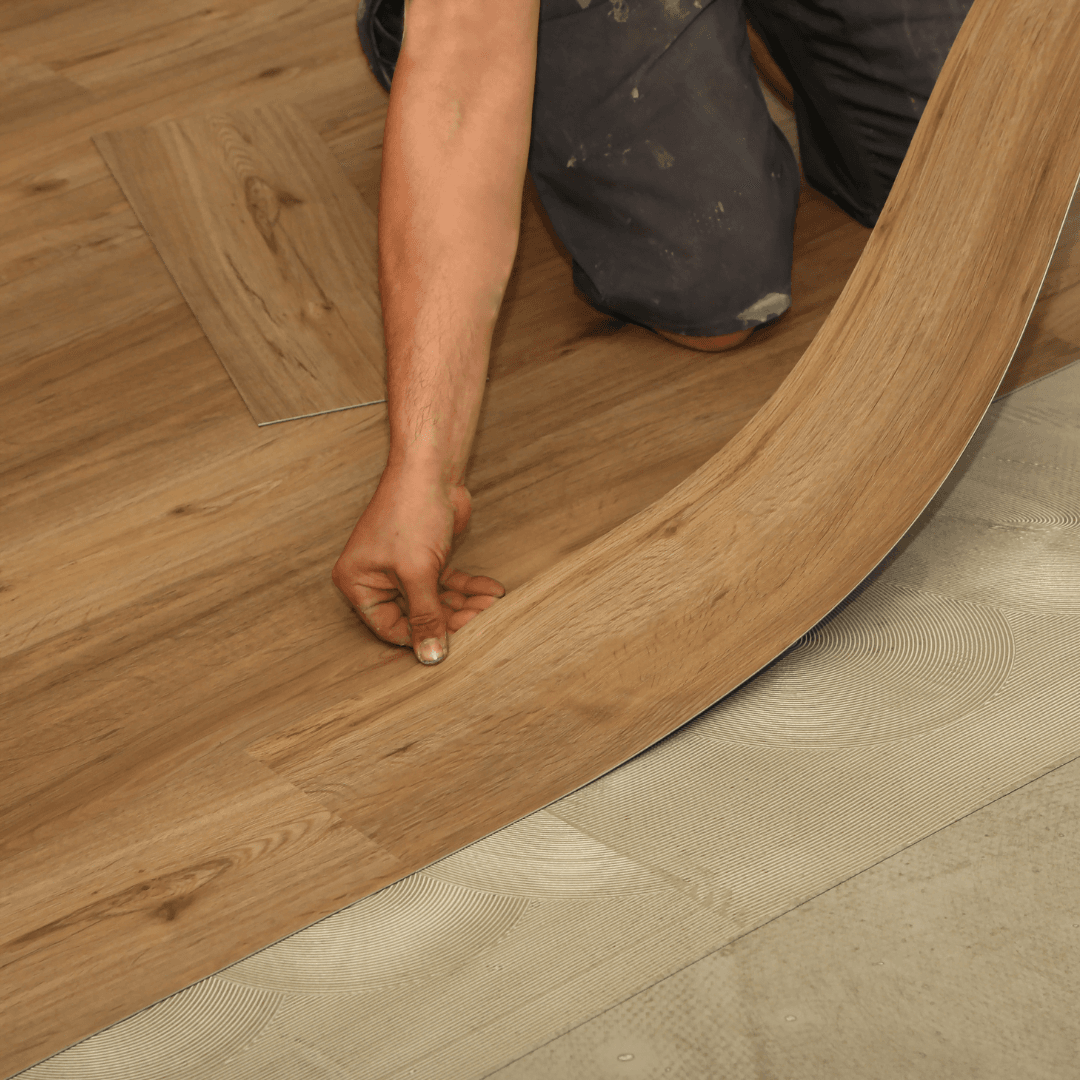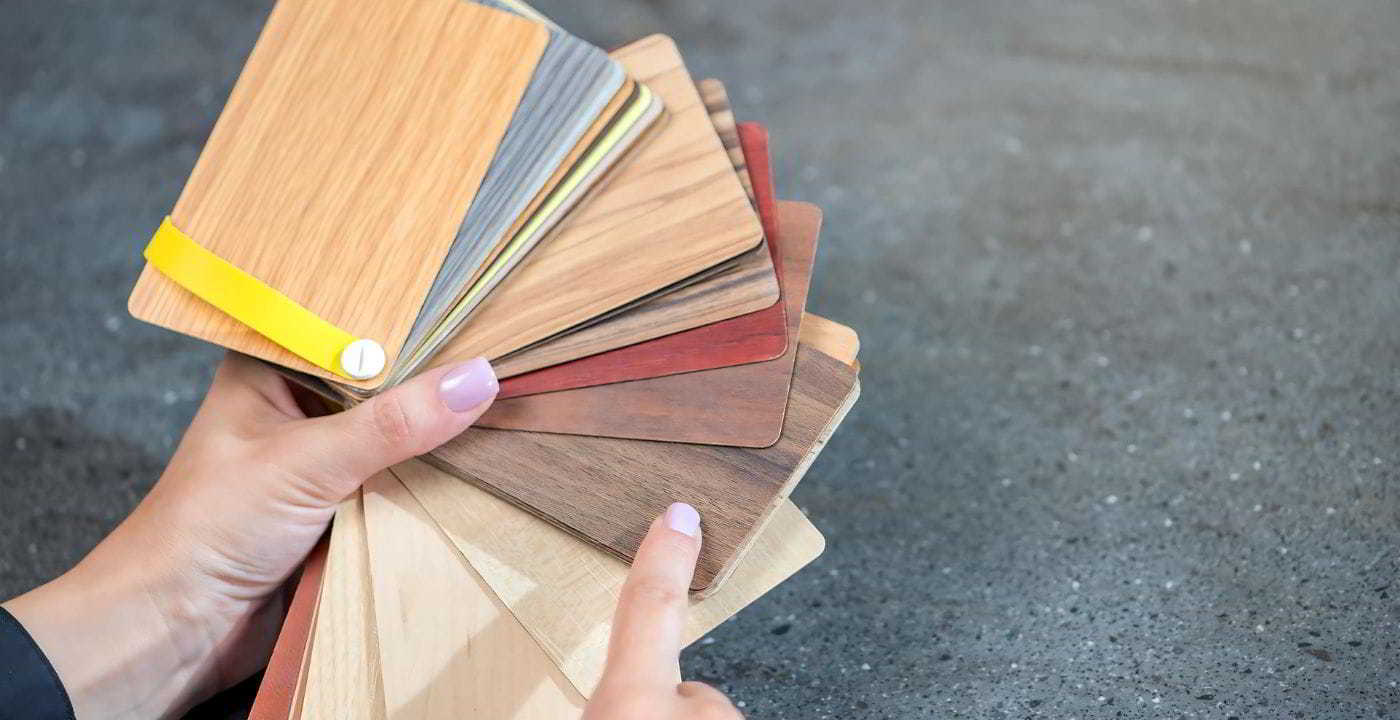
Everything You’ll Need
| Tool | Luxury Vinyl Plank (LVP) | Luxury Vinyl Tile (LVT) | Sheet Vinyl |
|---|---|---|---|
| Utility Knife | ✔ | ✔ | ✔ |
| Tape Measure | ✔ | ✔ | ✔ |
| Straight Edge | ✔ | ✔ | ✔ |
| Pry Bar | ✔ | ✔ | ✔ |
| Spacers | ✔ | ✔ | ❌ |
| Tapping Block | ✔ | ❌ | ❌ |
| Non-Marring Hammer | ✔ | ❌ | ❌ |
| Squeegee | ❌ | ✔ | ❌ |
| Grout Float | ❌ | ✔ | ❌ |
| Notched Trowel | ❌ | ✔ | ✔ |
| Floor Roller | ❌ | ❌ | ✔ |
| Heat Gun | ❌ | ❌ | ✔ |
| Seam Roller | ❌ | ❌ | ✔ |
Step 1: Prepare the Space
Take Off Baseboards and Old Flooring
The first thing to do for vinyl plank flooring is to take off baseboards and old flooring. This makes the floor ready to use.
Use a pry bar to remove the baseboards carefully, so you don’t hurt the walls.
If you are taking out carpet, cut it into pieces with a utility knife and pull it up. Follow the right steps for other floors.
Clean the Subfloor and Fix Any Cracks or Bumpy Spots
Sweep and vacuum the subfloor well to get rid of all dirt. Look for cracks or bumpy spots.
Use a leveling compound to fill any gaps or low areas, and sand down high spots to make it even.
Add Underlayment if You Want Extra Padding and Quietness
Adding underlayment is not always needed, but it can give extra padding and quietness, making the floor nicer and quieter.
If you decide to use underlayment, roll it out over the subfloor and stick it with tape, making sure there are no gaps or overlaps.
Step 2: Pick a Pattern or Design
Vinyl flooring patterns let you make your space look nice.
These patterns can fit with any style, from old to new, giving your floors a special look.
Check out some popular vinyl flooring patterns to see how they can change your home.
Straight Lay Pattern

The straight lay pattern is easy for vinyl floors. Planks run along the walls, creating a neat look that works in any room.
Diagonal Pattern

Try a diagonal pattern for a fun look. Planks are at a 45-degree angle, adding movement and depth, making small rooms look bigger.
Herringbone Pattern

The herringbone pattern is a classic zigzag look for vinyl floors. It adds texture and style to rooms like entryways and kitchens.
Chevron Pattern

The chevron pattern is stylish for vinyl floors with a continuous zigzag. It’s great for modern spaces.
Parquet Pattern
Step 3: Choose an Installation Method
There are different ways to install vinyl plank flooring. Each has its own pros and cons based on the type of vinyl and your needs.
GripStrip Method

GripStrip, also called peel-and-stick, is easy for DIY projects. Each plank has a sticky back; just peel and stick to the floor.
This is best for Luxury Vinyl Plank (LVP) because it is thicker and holds the sticky back well.
It might not work for thinner vinyl like Luxury Vinyl Tile (LVT) or Sheet Vinyl.
Click-Lock Method

Click-Lock, or interlocking, uses planks that snap together. No glue is needed, and the floor can move with temperature changes.
This works for both LVP and LVT flooring and some Sheet Vinyl.
Take Note:
- Follow instructions carefully to avoid gaps or uneven spots.
- Use spacers by the walls for the right expansion gap, so the floor can move without issues.
Glue-Down Method

Glue-down uses adhesive on the floor before placing the planks. This is strong and good for busy areas.
It provides a solid surface that can handle lots of use and moisture.
Take Note:
- Use the right adhesive for vinyl floors.
- Work in small areas to keep adhesive sticky.
- Press planks down firmly with a roller for a good bond.
- Let the adhesive dry before using the floor.
Step 4: Lay the First Row
Cut the Short Edge of the First Plank
To start, cut the short edge of the first plank. This helps it fit against the wall. Use a utility knife for a clean cut.
Place the First Plank 1⁄4 Inch from the Wall
Put the first plank about 1⁄4 inch away from the wall. This gap lets the floor expand with temperature changes. Use spacers to keep the gap.
Use Spacers for Expansion
Place spacers between planks and walls to keep the 1/4-inch gap. This allows the flooring to expand and contract without issues.
Stagger Plank Joints by 6 Inches
For a good look and strength, stagger the plank joints by 6 inches. This stops seams from lining up and looks more natural.
Step 5: Cutting Planks to Fit
Use a Knife to Cut and Break Planks
To cut planks around edges, use a knife to score a line. Then, snap the plank at the line for a clean break.
For Curved Cuts
Use a jigsaw or multi-tool for curved cuts around things like door frames. These tools make precise cuts. Learn how to use a jigsaw here.
Cutting Planks Around Pipes
Measure the pipe, add an inch, and drill a hole in the plank. Cut the plank to fit around the pipe and leave a gap. Use silicone caulk to secure the piece.
For Tight Spaces Like Under Doors
Use a jamb saw to cut planks for tight spaces, like under doors. It makes precise cuts close to the floor.
Step 6: Laying Subsequent Rows
Put the Tongue of the Plank Into the Groove of the Last Row
For new rows, angle the tongue of each plank into the groove of the last row. This locks the planks and makes a solid connection.
Use a Tapping Block and Soft Hammer
For a snug fit, gently tap the planks using a tapping block and soft hammer. Don’t use a regular hammer directly on the planks to avoid damage.
Step 7: Finishing the Installation
Install Transition Strips
After all planks are in place, put transition strips at doorways and between rooms. This gives a smooth transition and protects the floor edges. Follow the maker’s guide for putting in transition strips.
Transitioning to Other Flooring
When moving to another floor type, use a T-molding or reducer strip. Attach the strip to the subfloor, not the vinyl planks, for a solid and neat finish.
Leave a 1/4-inch gap between the vinyl planks and the transition strip to let the floor move and stop buckling.
Reinstall Baseboards
Put the baseboards back, making sure they attach to the wall, not the floor. This helps the floor expand and shrink without issues.
Allow the Floor to Acclimate for 48 Hours Before Use
Let the new floor sit for 48 hours before walking on it or adding furniture. This time helps the floor get used to the room’s temperature and humidity.
Common Things to Avoid When Installing Vinyl Floors
Too Much Moisture
Vinyl plank floors are not good for very wet places, like bathrooms. Water can get in and make the planks bend or peel.
Using Tools on the Planks
Don’t use a rubber mallet or hammer right on the planks. Use a tapping block to keep them safe when installing.
Don’t Overlap Plank Ends
Do not overlap the ends of planks in rows next to each other. This can make the floor weak and uneven.
Walking During Acclimation
Do not walk on the floor for 48 hours while it settles. This helps the floor last longer.
Tips for a Successful Vinyl Flooring Installation
- First, measure the room carefully and figure out how much flooring you need. Add 10% more for cutting and waste.
- Check each plank before you install it and throw away any that are damaged. This helps everything look nice at the end.
- Wear a knee pad for comfort while you work. It will protect your knees and make the job easier.
- Take your time and work carefully to avoid mistakes. Going too fast can cause errors and not look as good.
Installation Costs for Vinyl Plank Flooring
Putting in vinyl plank flooring has different costs based on how it’s done:
- Peel-and-stick: Usually costs $1.50 to $8 per square foot.
- Glue-down: Ranges from $2.50 to $12.50 per square foot.
- Floating/Interlocking: Costs between $3 and $13 per square foot.
Labor costs are $1 to $3 per square foot, depending on how hard the job is.
Extra costs may include underlayment at $0.50 to $1.00 per square foot, and transition strips and trim costing $1 to $5 per linear foot for a neat finish.
Do You Need Professional Help With Your Vinyl Flooring Installation Project?
Now that you know how to install vinyl plank flooring, you’re ready to make a strong, nice-looking floor. If you want experts to do it, we can help.
Our flooring installation team takes care of everything — from getting the subfloor ready to placing the planks perfectly — so you can relax and enjoy perfect results. We help you pick the best vinyl flooring for your space, like luxury vinyl plank or sheet vinyl.
Contact us today to set up your free in-home consultation and check if we serve your area.
Request a consultation
Meet with one of our skilled project specialists to get started





